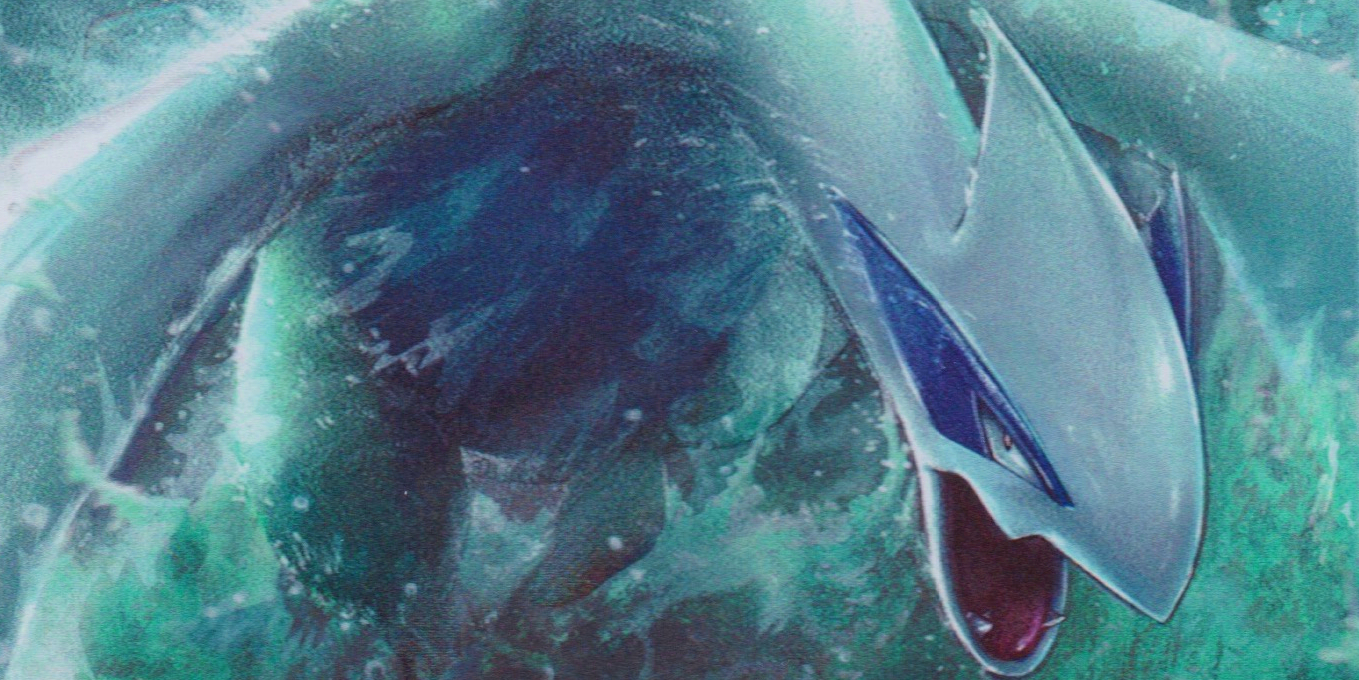I like to counter the meta. I like to play decks that are very hard to pilot and learn to outplay my opponents. I like to come up with creative takes on strong archetypes or recreate decks that are considered less than tier 1. Lugia is stopping me from doing all of the above. Lugia has been too strong for me to find a proper counter. I make one deck and it beats a version of Lugia, but loses to a different version of Lugia. I create a different list, but that list loses to the version of Lugia that I was beating with the first deck. After a certain point, I must capitulate. I have my preferences, but at the end of the day I will play the deck that gives me the best win rate. Lugia is too strong. If you can’t beat ’em, join ’em.
There are two main variants of Lugia. The first and more common variant plays Radiant Charizard and Amazing Yvetlal. This version will beat essentially all opposing V decks. This is because Charizard and Yveltal are one prize attackers that take two prize knock outs. This version of the deck effortlessly sets up attackers that should be very hard to set up. Charizard should only be useful in the late game and Yveltal should be almost impossible to set up, but this version of Lugia sets either one up as soon as turn two, creating the two-for-one prize trade, and does it TWICE. I don’t think people truly understand how strong this is. Charizard is no longer a card that only has use in the late game; with two Archeops in play, you can do 280 as soon as turn two. Yveltal ignores effects, all HP, it simply knocks out anything! The exception to this is Parasol being attached to the defending Pokemon, but there are counters to it. In this article I will only be covering “Type A Lugia”, which is the name I use to refer to the variant of Lugia playing Radiant Charizard and Amazing Yveltal.
Looking at the other version of Lugia (Type B), we are presented with a tanky deck that has the privilege of also hitting very hard. In the current meta we have decks that can one-shot and other decks that can tank hits. This is the only archetype that can do both. V-Guard plus Radiant Gardevoir will reduce damage by 50, effectively giving a two prize Pokemon 330 HP. The way we know something is “broken” is by looking at how a meta has to completely warp in order to stand a chance. There should not be a two prize Pokemon that can easily deal 280 repeatedly AND not be one-shot in response (Kyurem can do that, but not consistently, and it offers three prizes instead of two). Type B Lugia could warp the meta in such a way, if it becomes the more commonly played variant. This version of the deck can also heal, which will stop one prize decks from setting up the math they need. Type B Lugia is what will counter the decks that are trying to counter Type A Lugia. Healing effects stop Lost Box from having a chance. Heavy Collapsed Stadium plus healing will stop Regis from winning. V-Guard and Gardevior make it so Vikavolt will not win the prize trade. There probably will be some sort of other counter around, but the most intuitive and easy to pick up counter decks will lose to Type B Lugia.
Given that Type A beats most of the meta and Type B beats the few decks that Type A loses to, what deck do we play?? The answer might be, give in, play Lugia, try to win mirrors, play a very consistent list, and hope for the best. Or, you could play the hardest deck in the format: Giratina. Giratina earns a 50/50 to both versions of Lugia, but at the expense of forcing you to play perfectly repeatedly for 10 hours at a Regionals. Do you really want to have to do that? All of that effort just to gain a 50/50 to the most popular deck. That’s probably what I will end up doing, because I must be a masochist, but this article is for those who do not want to put themselves through that. This article is for those who are willing to embrace the new powerhouse of the format.
After upgrading to Stage 2 you will see an audio file of me reading this article here:  You must have a Premier Membership or greater to see the rest of this post. If you don't have a Premier account, you can Sign Up for one here.
You must have a Premier Membership or greater to see the rest of this post. If you don't have a Premier account, you can Sign Up for one here.
 You must have a Premier Membership or greater to see the rest of this post. If you don't have a Premier account, you can Sign Up for one here.
You must have a Premier Membership or greater to see the rest of this post. If you don't have a Premier account, you can Sign Up for one here.

When theorizing about Giratina lists inclusion of Temple of Sinnoh, possibly as a two of, are you making a prediction of what most Giratina lists will choose as a Lugia tech? Or are you referencing what you think Giratina lists should be doing optimally to prepare for the matchup?
I suppose my real question lies closer to: “Do you think playing Temple in Giratina is worthwhile and/or necessary?”
But I do think that making meta predictions with the knowledge that most people won’t play be playing an optimal 60 is obviously reasonable.